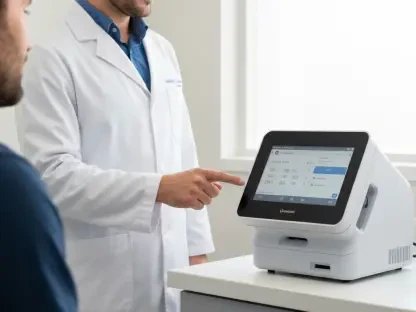In the evolving landscape of healthcare, seamless integration between payers and providers is not just a trend but a necessity for enhancing patient care and provider engagement. Fragmented and isolated data have long been challenges that hinder timely and informed decision-making in the medical field. These challenges give rise to inefficiencies that undermine the healthcare system’s capacity to deliver optimal patient outcomes. Provider engagement stands at the forefront of these discussions, as engaged providers are better positioned to address patient needs swiftly and effectively. Fully utilized data and integrated workflows transform the care delivery model, leading to less administrative burden and more focus on patient interactions.
The Vital Role of Provider Engagement
Provider engagement is a critical element in ensuring high-quality patient care, as it directly influences how healthcare is delivered and experienced. When clinicians have comprehensive access to timely data, they can make informed decisions swiftly. This minimizes potential errors and allows them to effectively tailor treatment plans. Furthermore, engaged providers often demonstrate a deeper understanding of patient histories, enabling them to anticipate and mitigate complications before they escalate. Through integrated care systems that offer real-time patient-specific information, clinicians can enhance their decision-making processes, leading to improved patient outcomes. Such systems also alleviate the administrative burden, enabling providers to allocate more time to direct patient care rather than being bogged down with paperwork.
Overcoming Data Silos and Fragmentation
The traditional model of healthcare communication is often hindered by isolated systems and cumbersome manual processes, particularly evident in fee-for-service payment structures. These barriers complicate essential exchanges, such as prior authorizations and claims submissions. With patient data entangled in various silos, providers may lack a complete view at critical decision-making junctures. This fragmentation not only results in delayed treatments and errors but also elevates operational costs while burdening providers with unwarranted stress. As the healthcare industry pivots towards value-based care, integrating workflows is imperative for streamlined operations and reduced inefficiencies. By embedding communications directly into electronic health records, providers can circumvent the need for multiple system logins, accessing everything from care gap alerts to lab results from a single interface.
Embracing Integrated Workflow Solutions
Integrated workflow solutions present a promising avenue for enhancing the overall efficiency and effectiveness of healthcare delivery. These solutions embed payer-provider communications into clinicians’ existing systems, such as electronic health records, providing immediate access to crucial patient information. This streamlined approach reduces the risk of errors commonly associated with manual data entry and retrieval. Moreover, by centralizing vital information within a single platform, these systems offer significant reductions in administrative workload, allowing providers to focus more intensely on patient engagement and care. This directly correlates with improved job satisfaction among healthcare professionals, as they spend less time on paperwork and more on meaningful patient interactions.
Transforming Healthcare for the Future
Transitioning to integrated care solutions does more than reduce administrative burdens; it revolutionizes healthcare delivery by fostering a culture of collaboration and efficiency. By promoting seamless communication and data sharing, healthcare organizations can achieve better care continuity, close care gaps swiftly, and reduce clinician burnout. Real-time alerts and data exchanges not only facilitate quicker responses to patient needs but also enhance financial performance for both payers and providers. Embracing these technologies promises a more efficient healthcare system capable of delivering superior patient outcomes. Integrated care represents a progressive shift from outdated systems, ensuring clinicians have immediate access to all necessary patient information for comprehensive care delivery.
The Path Forward in Integrated Healthcare
In today’s healthcare environment, the integration between payers and providers is more than just a trend—it’s essential for improving patient care and fostering provider engagement. Historically, the healthcare industry has been plagued by fragmented and isolated data, which poses significant barriers to making timely and informed decisions. This lack of integration leads to inefficiencies, ultimately compromising the healthcare system’s ability to deliver the best possible patient outcomes. Provider engagement is a key part of the conversation, as engaged providers are better equipped to respond to patient needs promptly and efficiently. Leveraging fully utilized data and integrated workflows can transform the care delivery model, significantly reducing administrative burdens and allowing healthcare professionals to focus more on patient interaction. This shift leads to a healthcare environment where patient care is prioritized, and providers can engage more effectively, ultimately fostering a system that values seamless interaction and heightened efficiency.









